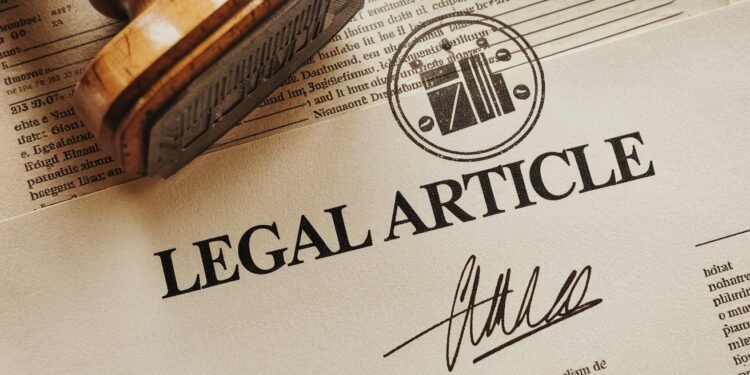Author: Sangamithirai. V, Chettinad School of Law
INTRODUCTION
The Code, Insolvency and Bankruptcy in 2016 instituted in India a standardized process for resolving insolvency as well as bankruptcy cases of any individual or corporate entities. Considered as one of the central elements of the process is claims made by creditors against a corporate debtor under insolvency. Claims are supposed to indicate the value that the creditors have in the debtor’s financial books, and their acceptance or rejection would drastically influence the outcome of the process.
An Insolvency Professional or the adjudicating authority rejects claims when they do not match the prescribed requirements or are not supported by proper documentation to be recognized. The grounds on which claims are rejected depend on several basis that may range from lack of proper debt, to evidence, or even procedural inadmissibility of claims, for late filing. These rejections can create severe troubles for creditors since they may lose the power to recover dues and, as a result, make their condition worse.
All stakeholders engaged in the insolvency process should be aware of the intricacies surrounding claim rejections. It goes a long way toward informing not only creditors’ capacity to realize their claims but also results in efficiency and effectiveness of the framework in the handling of the insolvency resolution process. As the IBC evolves, implications of claim rejections will remain at the top of legal practitioners’, policymakers’, and financial institutions’ radar screens.
LEGAL PRINCIPLES
Rejection of Claims under the Insolvency and Bankruptcy Code, 2016 is governed by a set of legal principles to ensure a transparent process with fairness. Indispensable knowledge for the creditors, insolvency professionals, and those stakeholders involving themselves in insolvency proceedings.
Filing and rejection of claims The procedure for the filing and rejection of claims is mentioned under the IBC. Specific sections as such section 72, Section 83, and Section 94 of the IBC elaborate on the initiation of insolvency proceedings by the admission of claims. The IBBI’s regulations add to the procedural requirements of filing claims.
Grounds for Rejection: Claims can be rejected on specific grounds, such as:
Insolvency and Bankruptcy in 2016
- It may not get accepted if it is not supported by proper documentation, such as missing invoice or contract
- It does not accept the claims from the ineligible creditors. Creditors who are operational and financial creditors do not satisfy the definition provided under IBC and thus, cannot be accepted.
- Claims can be presented within the given time frame. Failure to do that within the given time frame will lead to automatic rejection.
- The creditor bears the burden of proof, and he should be able to show a basis for the claim. If the creditor fails to set up a proper basis for his claim, an IP may reject the claim. The principle’s core message is one of emphasis on documentation.
- An IP is further empowered to scrutinize claims and use his discretion to determine whether a claim is genuine or not. The discretion vested in an IP should be used justly and transparently, keeping in mind all relevant evidence.
- An appeal is in place in the case of rejection by creditors. There is thus an element of review and rectification in place, and such a right ensures that this process will have fairness. Such a right exists before the National Company Law Tribunal (NCLT).
- The rejection process needs to be fair and, in any case, conducted in accordance with the basic tenets of natural justice. There should be transparency that creditors are informed of reasons for rejection and an opportunity of response or provision of additional documentation before a decision becomes final.
- The principles determining the rejection of claims are heavily influenced by various judgments that established legal precedents. Judgments by courts provided interpretations to clarify the scope of powers vested with the IP and rights of creditors, thereby making the legal environment more predictable.
- The ranking of the claim influences the process of rejection. It is so because, normally operational creditors stand above the rank of financial creditors and this fact would be preserved while the process of claim evaluation goes on. The creditors need to be aware of this ranking to understand the process of rejection properly.
- Rejection of claims would have an impact on the resolution process of insolvency. As claims recognized would affect the process of distribution of assets, rejection should not deviate from achieving a fair resolution in a time-bound manner for all stakeholders.
CASE LAWS
Innoventive Industries Ltd. vs. ICICI Bank (2018)
The Supreme Court of India in this landmark judgment rightly emphasized that the Adjudicating Authority should admit a petition in case of default repayment of any debt. The court had clarified the procedural aspect relating to admitting the claims and has made it clear that the claims have to be considered based upon the existence of debt and default rather than the merit involved in the disputes underlying them.
Sashidhar v. Indian Overseas Bank (2019)6
This judgment dealt with the issue of rejections based on the grounds of misfiling. The Supreme Court placed its reliance on the fact that an Insolvency Professional is duty-bound to verify claims with due diligence. The Supreme Court observed that a rejection must be cogent enough and that IP must ensure that all valid claims are considered so as not to vitiate the insolvency proceedings.
M/s. Shree Ram Urban Infrastructure Ltd. v. Arihant Superstructures Ltd. (2021)7
This case concerned the question of whether a creditor could file an appeal against an order where claims have been disallowed. Here, the NCLAT held that creditors have a right to file an appeal against the order passed by the IP rejecting the claims and hence, provides a process of redressal and reinforces an essential public interest aspect of transparency of the claim verification process.
REAL WORLD APPLICATIONS
Corporate Restructuring:
At the time of entry into bankruptcy, a business faces financial stress, and at this stage, it denies all claims for the purpose of ensuring that only valid and substantiated claims are considered and only those creditors are addressed who do have a chance of recovery. This ensures that negotiations are structured in an integrated manner and formulating a restructuring package that is workable.
Development of Creditor Strategy:
The need to plan and strategize the efforts of creditors while filing claims is great, where lessons from previous precedents and case laws dictate the outcome. For instance, most financial establishments have a culture of studying previous case laws to ensure the claims put forward are sufficiently documented. Strategic planning in this regard will play a critical role during recovery in cases of insolvency.
Negotiation and Settlements
Refusal of claims may often result in renegotiations by creditors and debtors. For instance, if one significant claim is refused, then other creditors may be prompted to negotiate settlements so as not to go through the long lengthy legal battles. This dynamic fosters an environment where parties are more predisposed toward settling amicably.
Compliance with the Law and Governance:
Companies operating in high-insolvency sectors must develop strong frameworks that guarantee compliance. Financial record keeping will be proper, communication with creditors timely, and regulatory requirements adhered to. Governance in this area is fundamentally important in keeping stakeholders’ trust and preventing insolvency.
Consequences on Real Estate Projects:
Claim rejection in the real estate sector has tremendous implications on projects under-going. In case contractors or suppliers’ claims are rejected, the construction work might seize, or more disputes delay the completion of the project. This would have rippling effects on the homebuyer, the investor, and the market at large.
Implications in the Banking Sector
Another aspect that banks pay much attention to is the rejection of claims due to its significant implications related to defaulting and instability among borrowers. High rejections of claims indicate risks in the system, and thus banks are compelled to reorient their lending and risk management practices, thereby indirectly influencing credit availability in the economy.
CHALLENGES
Challenges in the rejection of claims under the Insolvency and Bankruptcy Code One challenge is that the above, in their rejection of claims, presents a number of issues, capable of complicating the insolvency process of creditors, debtors, and even insolvency professionals. A comprehension of the challenges in this regard is important for effective navigation of the IBC framework.
Prime concerns arise around documentation and proof. Creditor[s] are entitled to produce proof for the claims he brings in, be it an invoice, agreement, or some other paper work. The catch is that a substantial number of creditors would find it difficult to gather every single piece of information and record involved, particularly in relation to large sums or debts collected over the years. In this regard, an insufficient document and proof may result in the actual entitlement for recovery at the hands of creditors being nullified.
Other relevant problems include the time factor of filing claims. The IBC ensures rigid timelines while filing claims; failure to meet the same may invite automatic rejection. Creditors are often at the risk of either not knowing the deadlines or being incapable of compiling claims within the time of the file, which is especially true when there is a pressure situation such as insolvency in place. This can disadvantage small creditors disproportionately as they might not have resources or the wherewithal and legal experience to handle the process on their own.
CONCLUSION
Finally, the rejection of claims under the IBC has emerged as one of the most critical aspects in shaping the insolvency landscape in India. Though a process through which fairness and integrity are ensured by filtering out unsubstantiated claims, it continues to prove to be very difficult for creditors and stakeholders. Documentary requirements, strict timelines, and vague rejection criteria also weave a web when creditors are faced with such problems while handling the claims process. Moreover, frequent changes in judicial interpretations further tape the picture. The IBC can definitely be made effective if the above issues are amended through more exact guidelines for creditor management as well as better facilitation for creditors. This will therefore enable the IBC to respond more credibly to the mandate of delivering timely and just settlements of disputes between parties, further driving health towards a better financial ecosystem and regaining confidence in the insolvency process for parties involved.
REFERENCES
Book Referred:
- Taxmann’s Insolvency and Bankruptcy Law Manual with IBC Law Guide Online Websites:
• https://indiacorplaw.in/2020/11/creditors-with-rejected-claims-methods-to-address inadequacies-under-the-ibc.html



